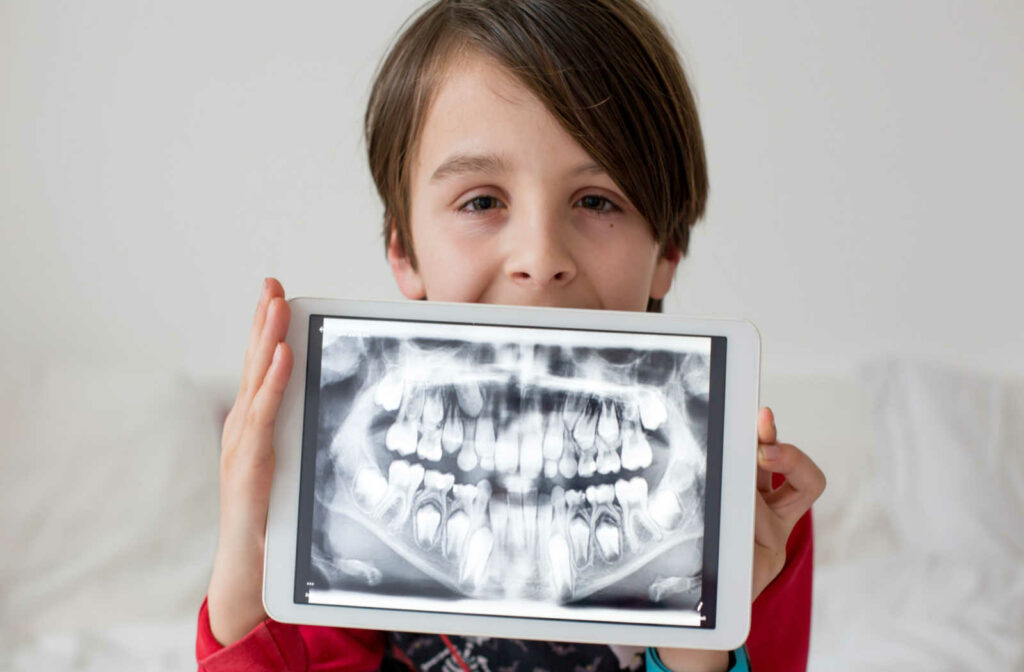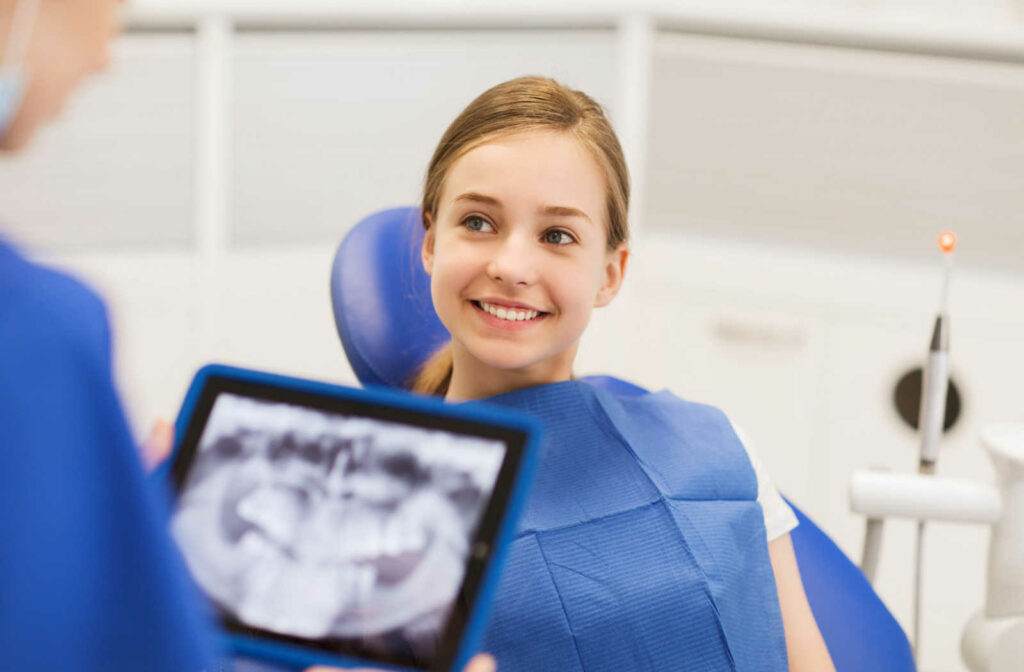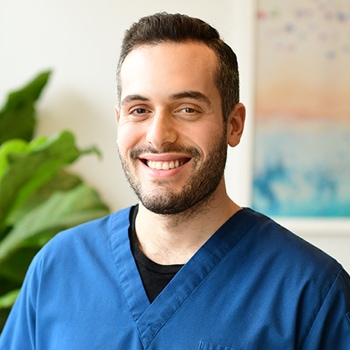Are Dental X-Rays Safe for Children?
The use of x-ray examinations in dentistry has become a trusted component of the dental profession. These images help dentists identify tooth decay and the position of teeth in the gums to ensure successful treatment if needed.
Dental exams for children help to see what is happening above the gum line, and dental x-rays provide a complete overview of a child’s oral health. It’s common for some children to fear the dentist. Many parents also have concerns, especially the risk of x-rays on children.
We are here to help put those concerns to rest by addressing the question: Are dental x-rays safe for children? The quick answer is: Yes, but let’s learn more about x-rays and their benefits.
What Are Dental X-Rays for Children?
A dental x-ray is an image of the inside of the mouth showing the position of teeth, gums, and bone. X-rays use invisible electromagnetic radiation or energy to penetrate human tissue.
The amount of radiation absorbed depends on the density of the tissue. Teeth and bones block the radiation and appear white on the x-ray image. For cavities, the radiation passes through and appears darker on the x-ray image.
Today’s dental x-rays are safe for children. Dentists now use digital x-rays that are fast, more precise, and emit lower levels of radiation than traditional x-rays used previously. They are also painless and easy to perform.
When taking dental x-rays in children, your dentist’s office uses a lead apron and possibly a thyroid collar. These go on parts of the body, such as the chest, abdomen, and pelvic region, to prevent radiation exposure to vital organs.
Why Do Children Need Dental X-Rays?
Parents often wonder why their child needs a dental x-ray if their teeth are healthy. Oral health is the most important aspect of dental care. With proper oral hygiene, it’s possible to prevent tooth decay and gum disease—not always seen with the naked eye.
A child’s teeth continue to develop, and by age 21, they may have 32 permanent teeth. There may be changes in both the shape and structure of teeth that require follow-up dental care.
Dental x-rays offer an opportunity to evaluate teeth spacing in the jaw, jawbone health, decay, infections, and progress toward achieving the desired level of oral health.
Children may need dental X-rays more often to monitor the growth of adult teeth. Dentists use the following factors to determine how often your child may need x-rays:
- Age
- Spacing
- Current oral health
- Symptoms of oral disease
- Diet
- Oral hygiene
- History of tooth decay

Types of Dental X-Rays
Some of the most common x-rays recommended for children that provide different views of the mouth include:
Bitewing
Bitewing x-rays show specific areas of the mouth to identify tooth decay between teeth and between teeth and the gumline. They also show how the crowns of teeth match.
Panoramic
As the name suggests, panoramic x-rays show the entire mouth, including the teeth, jawbone, and crowns of teeth. A full visual shows the wisdom teeth and can indicate jaw problems.
Occlusal
Occlusal x-rays show how the upper and lower jaws line up to assess the arch of your teeth and bite alignment. Any anatomical abnormalities with the floor of the mouth and palate can show in this x-ray.
Benefits of Dental X-Rays
Dental x-rays, mainly used as a diagnostic tool, can detect decay and abnormalities in the mouth. They are also an essential part of preventative oral care.
Dental exams alone, without x-rays, may not detect the early signs of dental problems, which are vital for effective treatment. Children may need to have regular x-rays more often than adults to monitor the growth of teeth. They are also more susceptible to tooth decay.
Additional benefits of dental x-rays:
- To determine if there is enough room in the mouth for permanent teeth
- To keep track of the size, number, and position of primary teeth
- In preparation for orthodontic treatment
- To determine the extent of mouth injuries or trauma
Our Approach to Your Child’s Dental Care
Routine dental care in children monitors teeth development through good oral hygiene practices and regular checkups by a dentist or dental hygienist. X-rays or dental impressions are a part of your child’s oral health.
Dental x-rays are safe for children where the benefits far outweigh possible risks. If you are a parent and concerned about your child’s oral health or their need for x-rays, book an appointment with Marks Dentistry today. We’re here to support your child’s dental health with care and patience.




